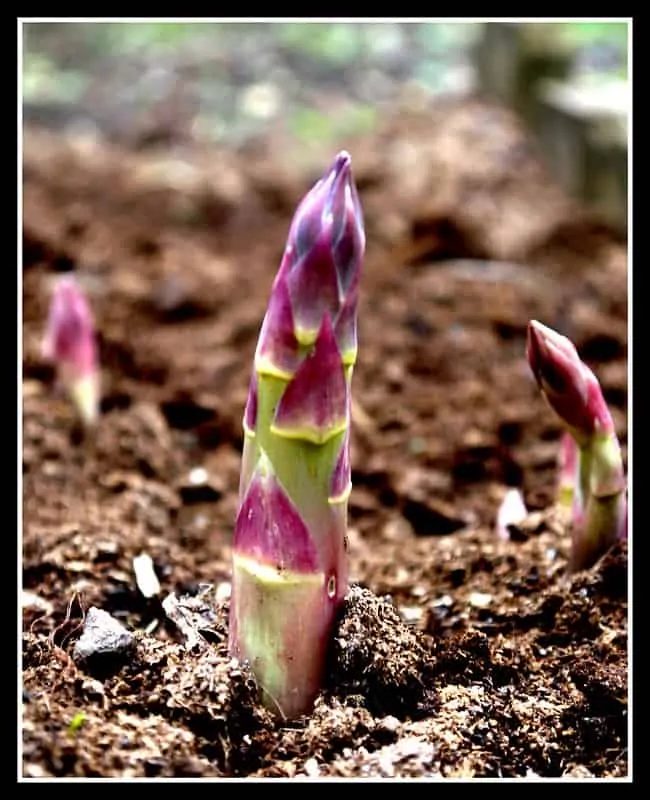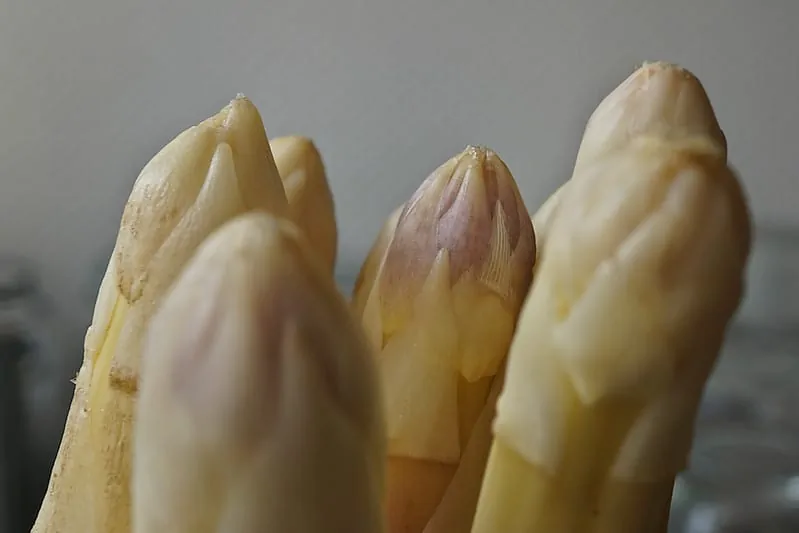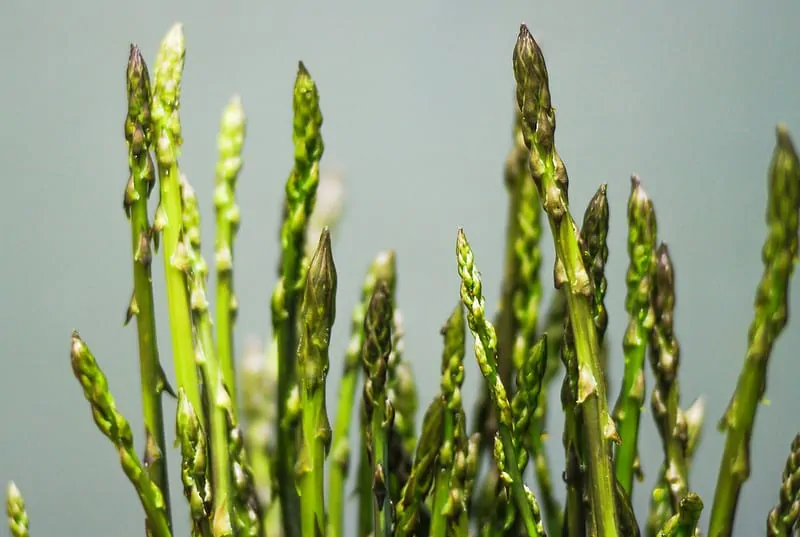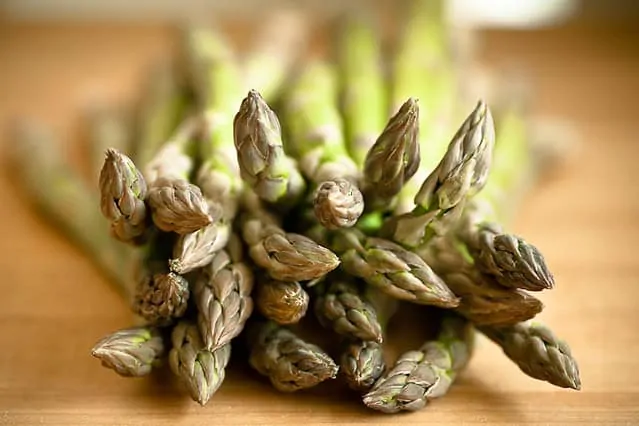How To Grow Asparagus At Home - A Full Guide
Test your gardening skills and try growing asparagus at home! You'll be rewarded with fresh, healthy asparagus and with a "skilled gardener" badge!
Grow Asparagus At Home: All About Asparagus
Asparagus is a popular vegetable, served as an appetizer or as a side dish. Originally from Europe and the temperate regions of Asia, it is now widespread. Romans and Egyptians used it as a vegetable and the earliest representations date to 3000BC. One of the oldest surviving written recipes is on how to cook asparagus.
It’s time we moved a bit in a different direction. Remember when we showed you how to grow herbs indoors? Today we are looking at how to grow asparagus! I know, it’s a bit far from home with this one, but give it a try.
Asparagus also has many medical properties, including a diuretic. It is low in sodium and high in fiber, vitamin B6, calcium, magnesium, and zinc, as well as vitamin C. It is also has a low caloric input.
There are two kinds of asparagus widely used: white and green. Gardeners create white asparagus by covering the stems of sprouting green asparagus with soil. Chefs and professional tasters say it is less tough and bitter, and has a finer taste. The edible part of asparagus is the freshly sprouting stem before the tips start turning yellow and flowering. After that, it turns woody and bitter and asparagus fruit are poisonous.
How To Grow Asparagus: The Guide
Getting the plant
You can try growing asparagus from seeds, but for the best results, I recommend getting one-year-old sprouts from a gardening store. These roots are called crowns and are ready to be planted in March.
Placement
Asparagus is best grown outdoors. It needs a lot of space, about 6×5 ft. for each root. It also takes a long time before you can harvest any usable sprouts, so pick a permanent spot for your plants. That will be the asparagus vegetable bed.
You can try growing asparagus indoors, as well, in a big enough container. You need a 6x6ft wide container that is about 12 inches deep for best results.
Soil
By comparison to potting soil, asparagus needs too much space to be filled from a bag. The ideal soil is clean, weed and rock free, and well-fertilized. Asparagus grows on sea coasts so sandy soil is good, but mix it with manure. Take the time to prepare the vegetable bed. Check that the PH is neutral and adjust if needed. It’s best if you overturn the whole bed to air out the soil and keep it covered with a weed barrier before planting, to avoid anything growing in between your asparagus.
- Pick your favorite gardening tools and start preparing your asparagus bed!
- Dig a trench on the entire length of the bed, 12 inches wide, and 8 inches deep.
- Fill the bottom 2 inches with well-rotted manure and build a ridge down the middle of your trench. Its peak should be about 2 inches below the surface.
- Place your crowns on the ridge. Leave 18 inches of space between the crowns and 18 inches between rows.
- Stagger crowns between adjacent rows to give them enough space to grow. Cover the crowns with soil, leaving just the tips of the sprouts outside.
- Water abundantly and mulch with 2 inches of organic, weed-free matter.
Light
Asparagus likes direct sunlight. Pick a spot in your garden where it will have all the light it needs. If you are very dedicated to growing asparagus, you might have to rethink some of your landscaping to give it full sun the whole summer. Some gardeners say asparagus grows in dappled shade as well, but it takes skill to convince it to do so.
Water
Asparagus plants need a lot of water, especially in the first few weeks after planting. Water slowly and deeply, after the plants are out of the sun. For that, use a low debit for a long time. Pick the best garden hose for your needs from this handy guide! Check that the top 8 inches of soil are thoroughly soaked. For that, you can use a device or simply dig a hole after you watered and look.
Temperature
Asparagus grows in temperate regions so the roots and rhizomes will live through winter. Check out the USDA hardiness zones guide to see if your area is good for asparagus! To sprout it needs warm temperatures and full sun. Frost after it sprouted can kill the stems and in extreme cases the whole plant.
- Keep it covered with wool felt if you expect freezing temperatures once it started growing green.
- In winter, asparagus plants are dormant so they will be safe underground.
- Asparagus is perennial. It will sprout on its own in spring. For summer, it can withstand very high temperatures, so don’t worry about it.
- Make sure to keep the soil wet and not to water the leaves when in full sun and you are set.
During its growing season, asparagus does best in temperatures of 60-70 F at night and 70-85 F during the day. Go below 55 F or above 85 F and growth will slow.
Trimming
In the first year you have the plants, trim the sprouts once, when they are a few weeks old, then let them grow to size, flower, and dry. Let the leaves dry out completely before cutting them off in autumn. Alternatively, set fire to them with proper precautions, to combat pests.
Fertilization
Fertilize your asparagus with an organic fertilizer like mulch or compost, either in early spring before shoots start sprouting or late autumn when the leaves are dry and cut to the ground. You can also give it some extra fertilizer during growth season for a better harvest. Use organic fertilizers and dilute them as instructed to avoid root burn. Check the acidity as well, as too acid soil will kill the plants.
Care
Asparagus is prone to pests. Slugs and bugs love asparagus. You can combat slugs by outlining the edges of the bed with salt, the asparagus plants won’t mind. Use pesticides to combat bugs, or try planting tomatoes in between the rows of asparagus. Sawdust lining also combats slugs and snails, while burning the crops in autumn kills the bug larvae. In spring and summer pick the pests off by hand and cut away the affected stems.
How To Grow Asparagus: Summary
Light
Full sunWater
PlentyTemperature
Temperate areasSoil
Rich, neutral PH, well-drainingToxicity
Edible, except the fruitDifficulty
DifficultHow To Grow Asparagus: Harvesting
Once the asparagus plants have been with you for three years, you can start harvesting for eating. Pick sprouts that are about as thick as your finger and let them grow to 8 inches. Use a sharp knife to cut them just below the soil level. Be careful not to cut off or damage part of the root.
You can harvest up to 3 or 4 times, depending on the weather. If you know that your area has long summers and warm autumns, you can try for 4 harvests. Start with 3 though, then next year you can shoot for 4. Cut off smaller sprouts as well, but those aren’t great for eating.
Don’t expect too much asparagus in the first years, the plant needs to fill out, but in time harvests will get richer. Take look at what the experts have to say about growing and harvesting asparagus!
Final Thoughts
Have you ever tried a project this size? Are you willing to try to grow asparagus? Tell me all about it in the comment section below!







